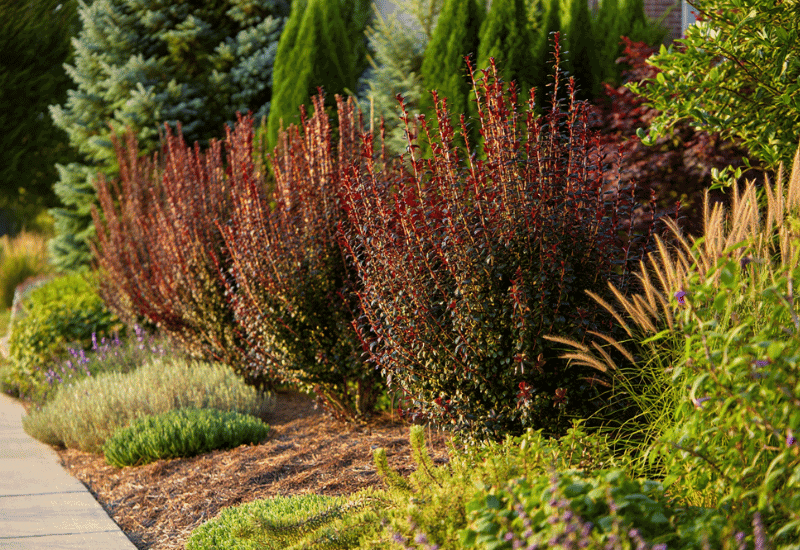
If you’ve ever stood in your backyard wishing you could enjoy a quiet cup of coffee without feeling like you’re on display, you’re not alone. Every gardener hits that moment—when you crave a bit more privacy, a little less noise, and a softer edge between you and the world.
The good news? You don’t need to wait a decade for a row of trees to grow or fight with high-maintenance hedges that never behave. Fast-growing shrubs can give you the privacy you want in just a season or two—if you pick the right ones.
That’s where most people go wrong. They reach for the usual quick fixes—privet, burning bush, forsythia—and before long, those “easy” hedges start spreading, seeding, or demanding weekend-long pruning sessions. I’ve seen it happen more times than I can count.
The truth is, you can have privacy and control. There are shrubs that grow quickly, fill in thick, and still stay well-mannered. Some bloom in spring, some stay green all year, and all of them respect their boundaries.
So if you’re ready to build a hedge that gives you peace without extra work, here are fifteen of the best fast-growing privacy shrubs—beautiful, dependable, and guaranteed not to take over your garden.
15 Best Fast Growing Shrubs for Quick Privacy in Your Landscape
A fast growing shrub is simply a plant that becomes big and fast. The advantage for privacy is obvious; you don’t need to wait for years or decades to screen your private area.
In fact you can get results in a few years, and with some of them, even on the first year. But which ones are the best?
1: Spicebush (Lindera benzoin)
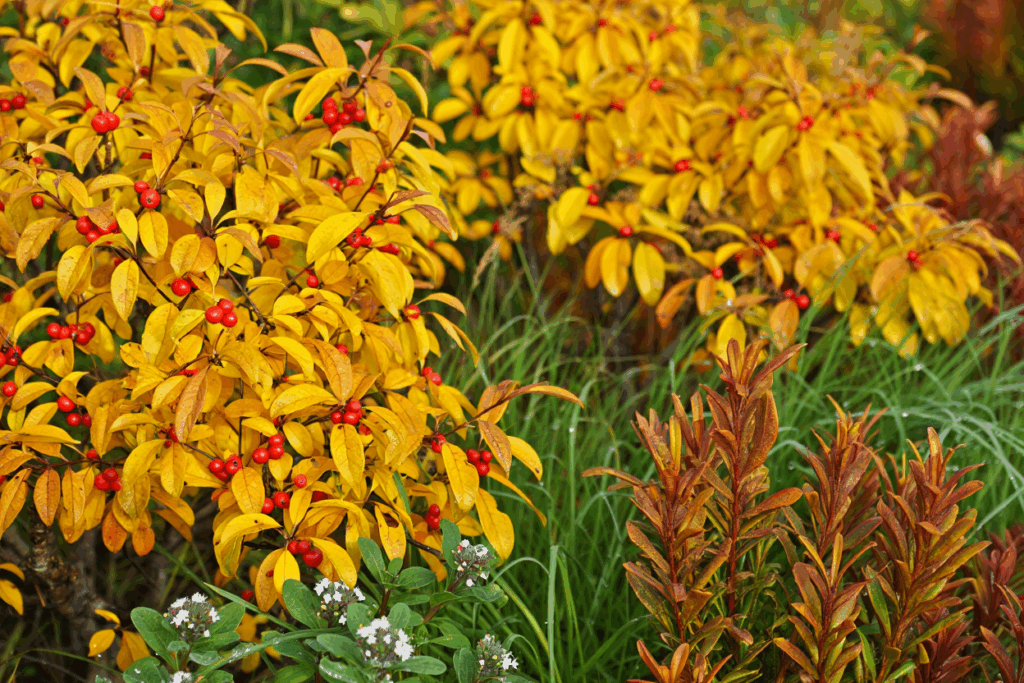
For early-spring brightness that rivals forsythia, spicebush is the gentler, native option. Before trees even leaf out, its twigs shimmer with tiny golden blossoms that light up woodland edges. By May, fresh green leaves unfurl, filling out into a soft, full hedge that stays lush all summer. Come autumn, the foliage glows buttery yellow while female plants bear scarlet berries beloved by birds.
Spicebush grows fast enough to give you privacy in a few seasons but never becomes unruly. It tolerates part shade and moist soils where few others thrive, making it perfect for natural privacy screens or understory hedges. Plus, it’s the host plant for the spicebush swallowtail butterfly—so your hedge becomes a living habitat.
Hardiness: USDA zones 4 to 9
Light exposure: Full sun to part shade
Blooming season: Early spring
Size: 6–12 ft tall × 6–12 ft wide (1.8–3.6 m)
Soil: Moist, well-drained loam or clay; acidic to neutral pH
2: Arrowwood Viburnum (Viburnum dentatum)
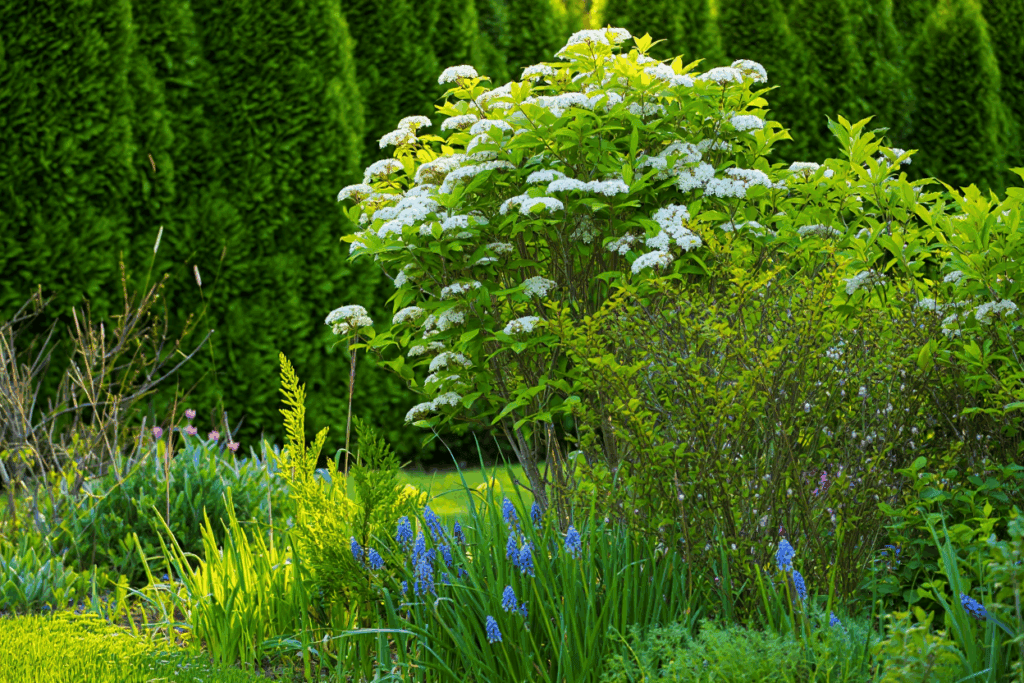
If you love the look of a full, fast hedge but dread the invasiveness of privet, arrowwood viburnum is your garden-friendly upgrade. Its bright green, toothed leaves grow densely from the base up, forming an instant natural wall that feels lush and grounded. In late spring, the shrub erupts in frothy clusters of white blooms that hum with native bees and butterflies, followed by deep blue-black berries that songbirds can’t resist.
Through summer, the foliage remains rich and glossy, then turns shades of crimson and burgundy in fall—so your “green fence” glows long after most hedges fade. It’s equally happy in full sun or partial shade, adapts to clay or loam, and handles pruning beautifully if you want a neat hedge line.
Hardiness: USDA zones 3 to 8
Light exposure: Full sun to partial shade
Blooming season: Late spring
Size: 6–10 ft tall × 5–8 ft wide (1.8–3 m)
Soil: Average to moist, well-drained loam or clay
3: Crape Myrtle (Lagerstroemia indica)
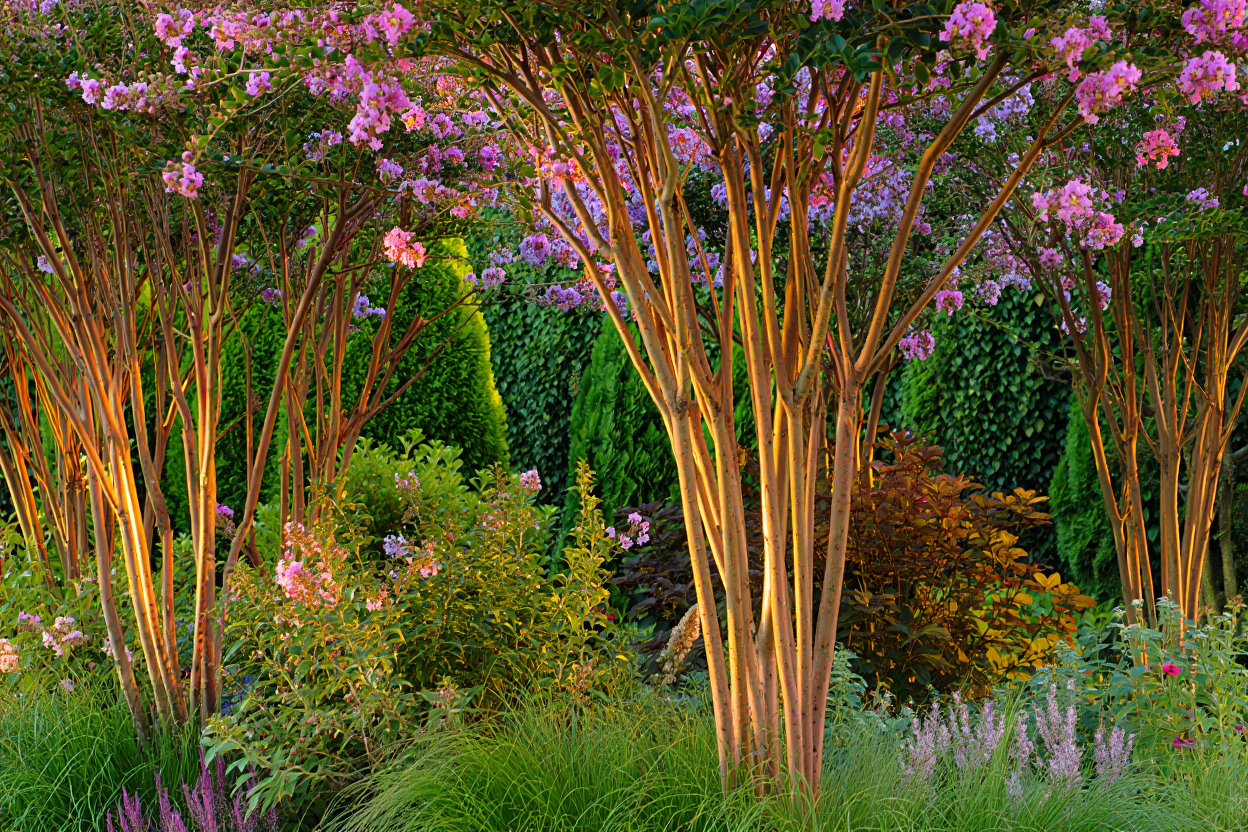
Crape myrtle grows fast and upright, with regularly positioned branches and very thick foliage. This a alone gives you privacy, but then you also get an extra bonus: massive blooms with thickly packed inflorescences that are usually pink to magenta, but they can also be white, red, purple or rose, depending on the variety.
The foliage is glossy and it will drop in winter, but… Some variety add amazing colors: it is usually dark green (emerald to olive), yet ‘Cherry Dazzle’ has a red to purple shade, while the award winning ‘Ebony Flame’ has black leaves and bright ted blooms. Ideal if you want a strong effect.
Crape myrtle comes in dwarf varieties (up to 3 feet , or 1.5 meters) and large ones, which are ideal for big view blocks in fairly spacious gardens, but only informal ones.
4: Beautyberry (Callicarpa americana)
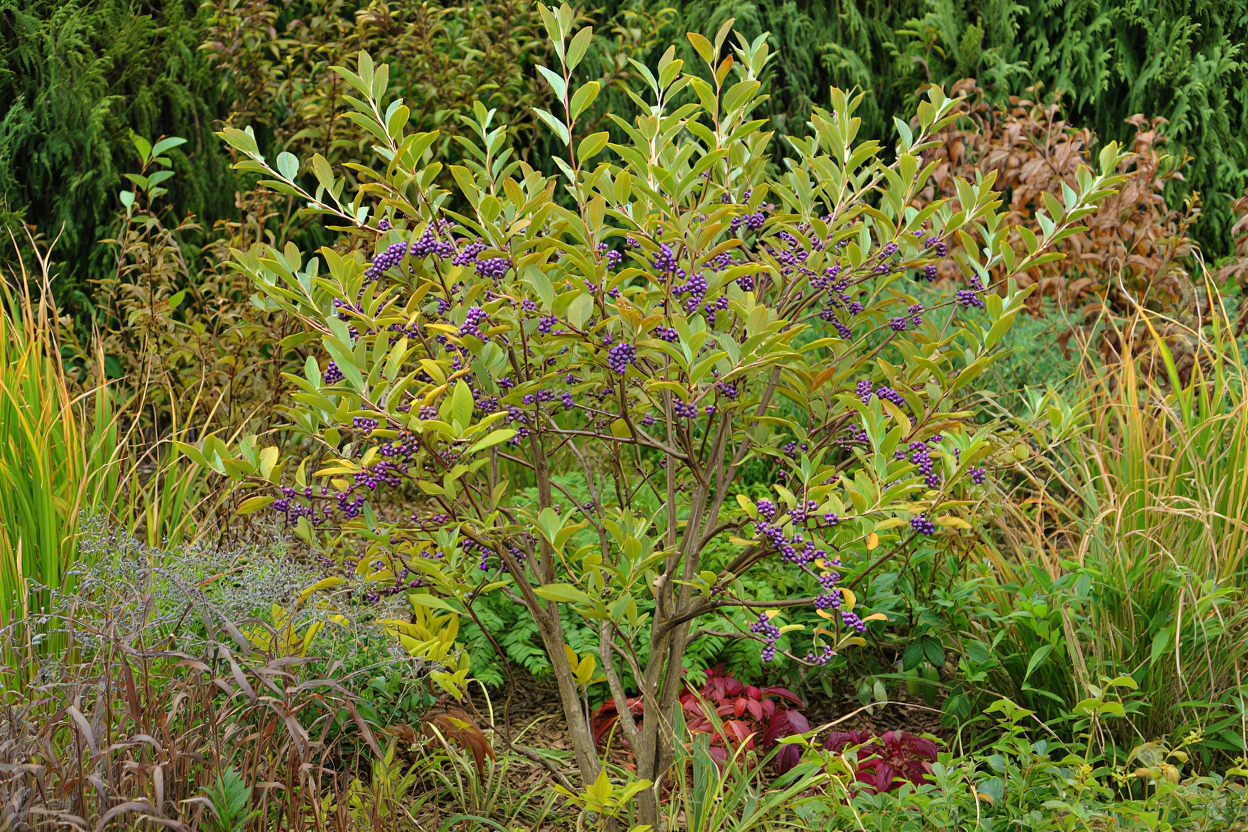
Beautyberry shrubs will shield you from prying eyes fast and, well, the name says it: with beauty. The branches are long and thin, filled with broad, mid green leaves that start in spring and cover the bush till late fall.
They arch, almost coming back to the ground, and they fill with white, pink or violet flowers in summer.
But this plant is bette known for the amazing violet purple berries that follow them in decorative clusters in fall. And it will fill with butterflies, pollinators and birds as well.
Beautyberry has a herbaceous look that makes it suitable to informal and traditional gardens, like English country or cottage gardens; it is easy to grow and low maintenance and it looks really great in naturalized settings.
5: Mock Orange (Philadelphus coronarius)
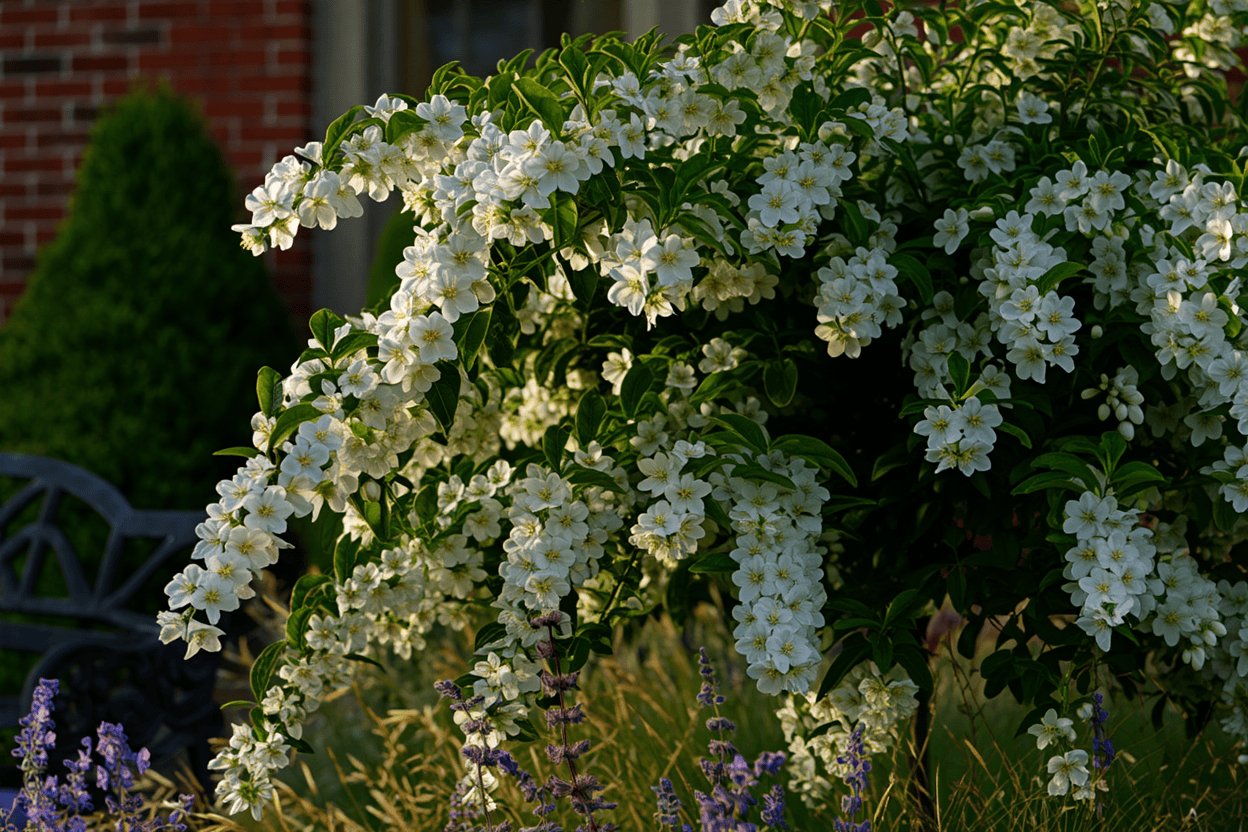
Mock orange is a fast growing deciduous shrub that takes its citrus smelling blooms. They don’t loom at all like “zagare” the flowers of orange trees, but they are still beautiful;
they come in in small groups of white blossoms at the end of branches, showy and with four petals each.
The foliage is broad and mid green, serrated, curved and pointed elliptical, and it is dense enough to stop any curious eye…
In winter, you will be able to enjoy the pale brown branches, waiting for the warm season to come back.
Mock orange is a well known shrub for its fragrance and beauty, it gives you that idea of “fruit tree blossom”,
looking a bit like apple trees, but it has a bushy shape that suits an informal garden, especially one that hearkens back at traditional and country designs, even if it is in an urban or suburban area.
6: Lilac (Syringa vulgaris)
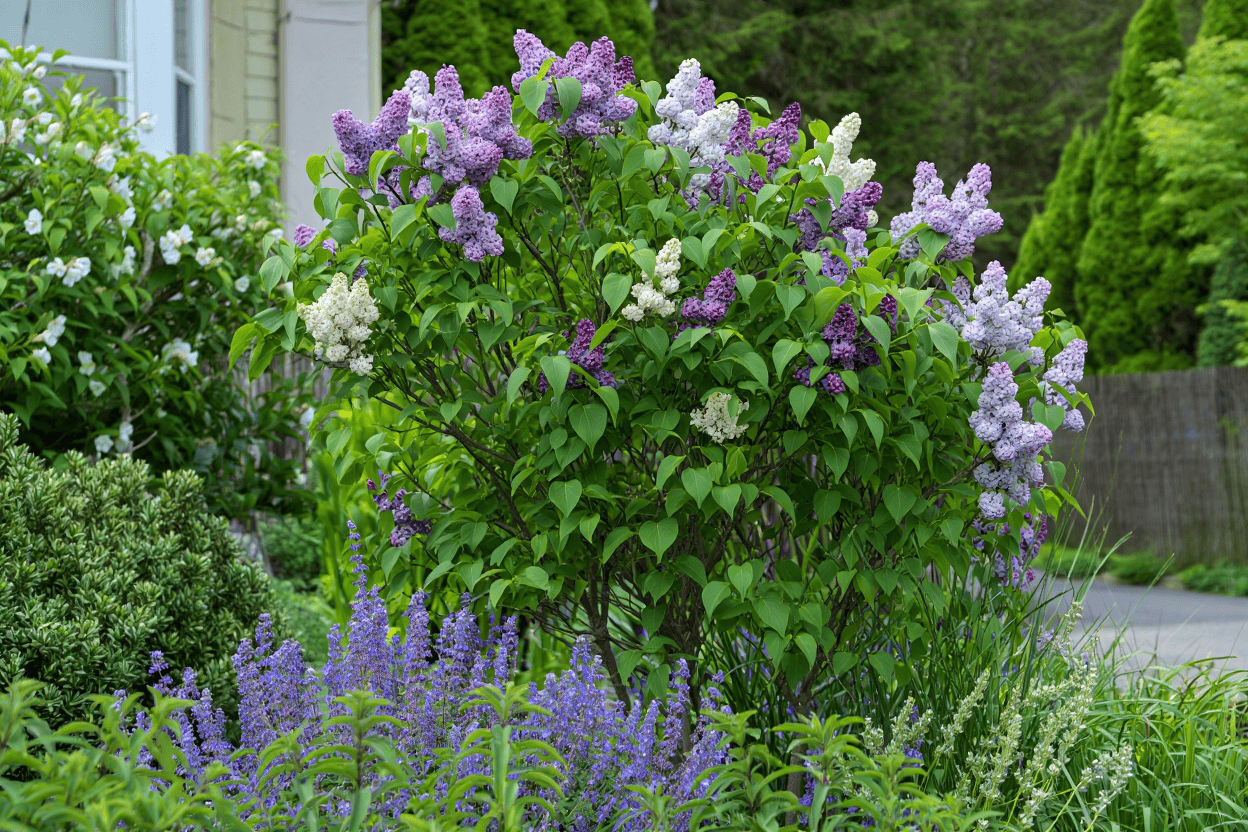
Everybody knows lilac shrubs, and they do grow fast and strong to give you full privacy in a short time.
Of course, this plant is famous for its spikes of lilac, pink, magenta or almost white flowers, and there are reblooming varieties like ‘Josee’ that keeps blossoming from late spring to frost.
The color display is accompanied by dense and mid green foliage, which makes looking through these shrubs impossible.
Lilac is a must in country and informal gardens; the blooms are massive and the plant, great for foundation planting as well as fir hedges, screening or borders. It is low maintenance, and quite strong, so, ideal for a fresh, colorful but private corner.
7: Bottlebrush Buckeye (Aesculus parviflora)
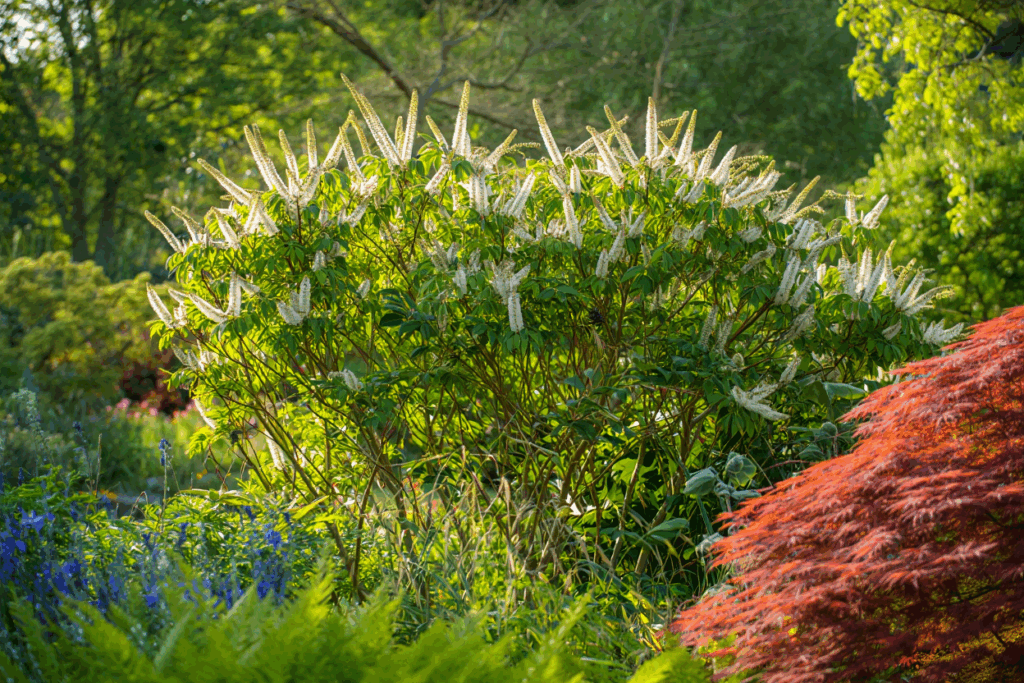
If you admired the graceful arch and summer flowers of beauty bush, bottlebrush buckeye is its more refined, shade-loving cousin. This fast-growing shrub unfurls broad, bold leaves in spring, creating a lush green barrier that feels substantial yet natural. In early summer, it sends up tall white flower spikes—like living candelabras—that attract hummingbirds and pollinators from across the yard.
It spreads slowly by underground stems to form stately colonies, never invasive, and it fills difficult shady corners where most screening plants fail. In fall, the foliage turns buttery yellow, adding one last glow before dormancy. Bottlebrush buckeye gives you both coverage and elegance—ideal for woodland edges, under large trees, or as a soft green backdrop for cottage borders.
Hardiness: USDA zones 4 to 8
Light exposure: Part shade to full shade
Blooming season: Early to midsummer
Size: 8–12 ft tall × 8–12 ft wide (2.4–3.6 m)
Soil: Moist, well-drained loam or clay; slightly acidic
8: Hazelnut (Corylus spp.)
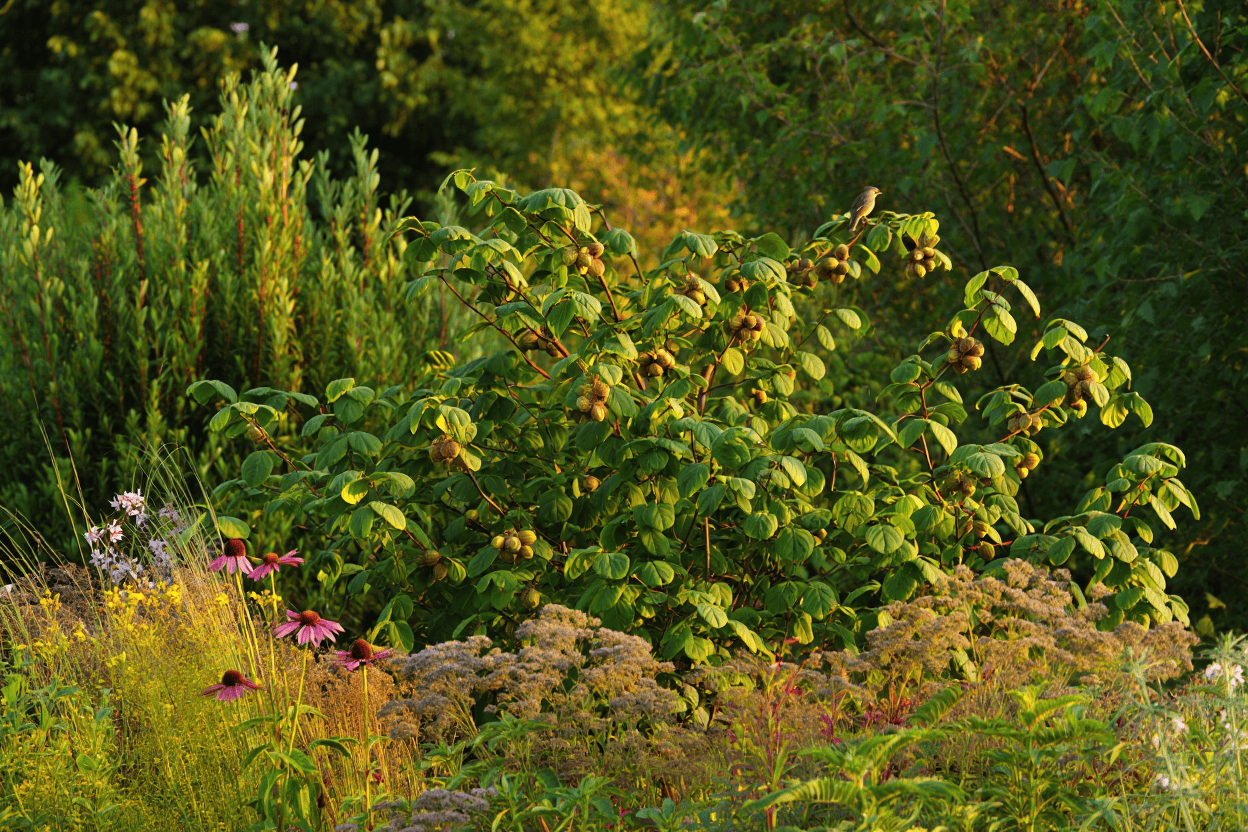
Hazelnut is a fast growing, bushy deciduous shrub, and it is the one that gives us the famous nuts too. Abundantly.
I personally recommend it for soil improvement, as it has loads of leaves, broad and green, that feed the soil when they drop at the end of fall, also giving you natural mulch.
The plants have an oval habit, which fill with catkins in late winter (like flowers, but they look like fluffy tails).
They will attract loads of pollinators too, bringing your garden to life. And in late summer or early fall you can actually harvest loads of hazelnuts, without jealous neighbors looking on!
Hazelnut is a great hand in any garden, informal in design, and it is also ideal for wilder, naturalized places; if you have a large plot, you can use it to get sheltered rooms where you are literally cut off from the rest of the world.
9: Serviceberry (Amelanchier alnifolia)
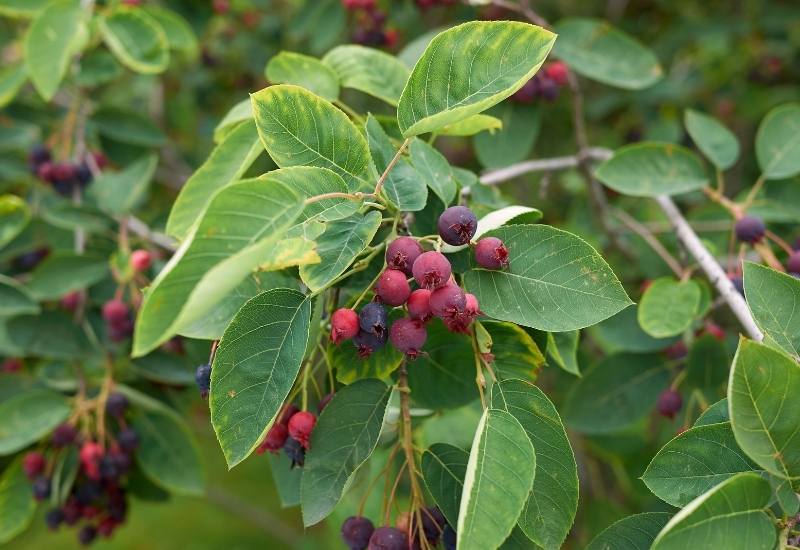
Serviceberry is a deciduous flowering shrub with an en habit. This makes it ideal for “partial screens”, which allow light into your garden while they discourage passers by from looking in. It provides interest all year round as well.
The clusters of white and fragrant flowers will bloom in mid spring, while the branches are naked. Then, it will grow small oval, light green leaves that stay on till frost, but nit before they greet you with a final blush of red.
The berries will give you a playful element with their orange color which turns red in summer, attracting lots of birds! In winter the elegance of the branches will give you a living statue to display.
Serviceberry is great as a specimen, but also in clumps, or in hedges and wind (or view) screens. Easy to grow and fast, it suits any informal design… It is also very cold hardy too, so, ideal for the northern states and Canada.
10: Red Chokeberry (Aronia arbutifolia)
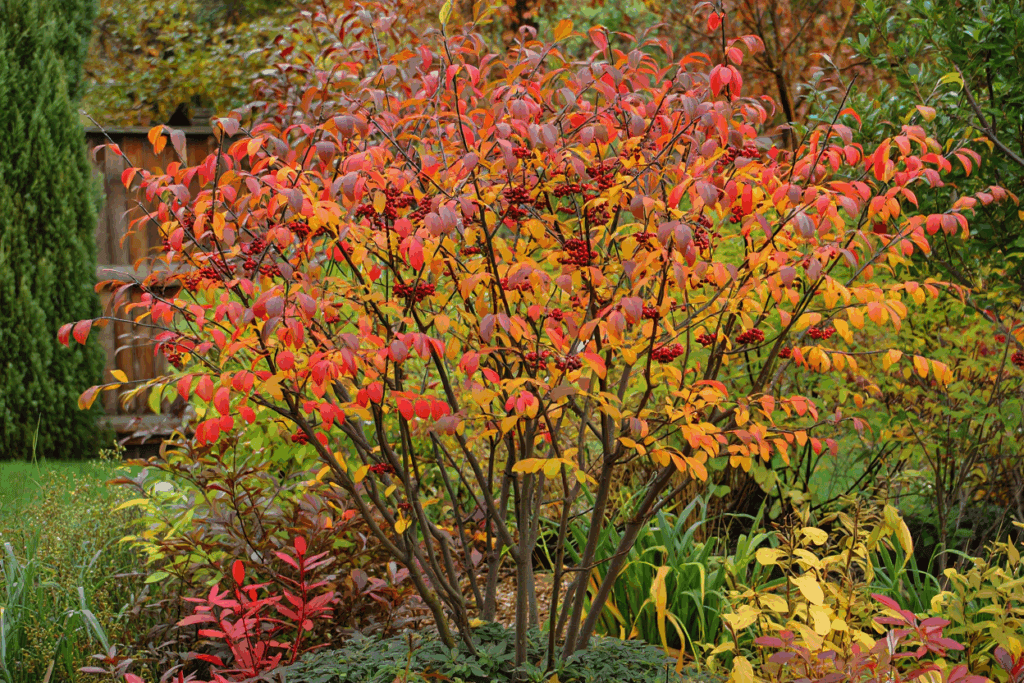
Looking for the fiery fall drama of burning bush—minus the environmental guilt? Red chokeberry delivers the same brilliance but adds wildlife value and four-season interest. In spring, it’s blanketed with soft white flower clusters that attract pollinators. By midsummer, glossy green foliage creates a neat, upright screen, and when autumn comes, it ignites in scarlet and orange hues, dripping with bright red berries that last into winter.
It grows quickly and thrives in sun or part shade, tolerating everything from wet soil to drought once established. Its upright habit makes it ideal for narrow property lines or layered borders where you need height and structure. Birds feast on the fruit, and the shrub never spreads where it’s not wanted.
Hardiness: USDA zones 4 to 9
Light exposure: Full sun to partial shade
Blooming season: Spring
Size: 6–10 ft tall × 3–5 ft wide (1.8–3 m × 1.5 m)
Soil: Moist to well-drained loam, clay, or sand
11: Irish Juniper (Juniperus communis ‘Hibernica’)
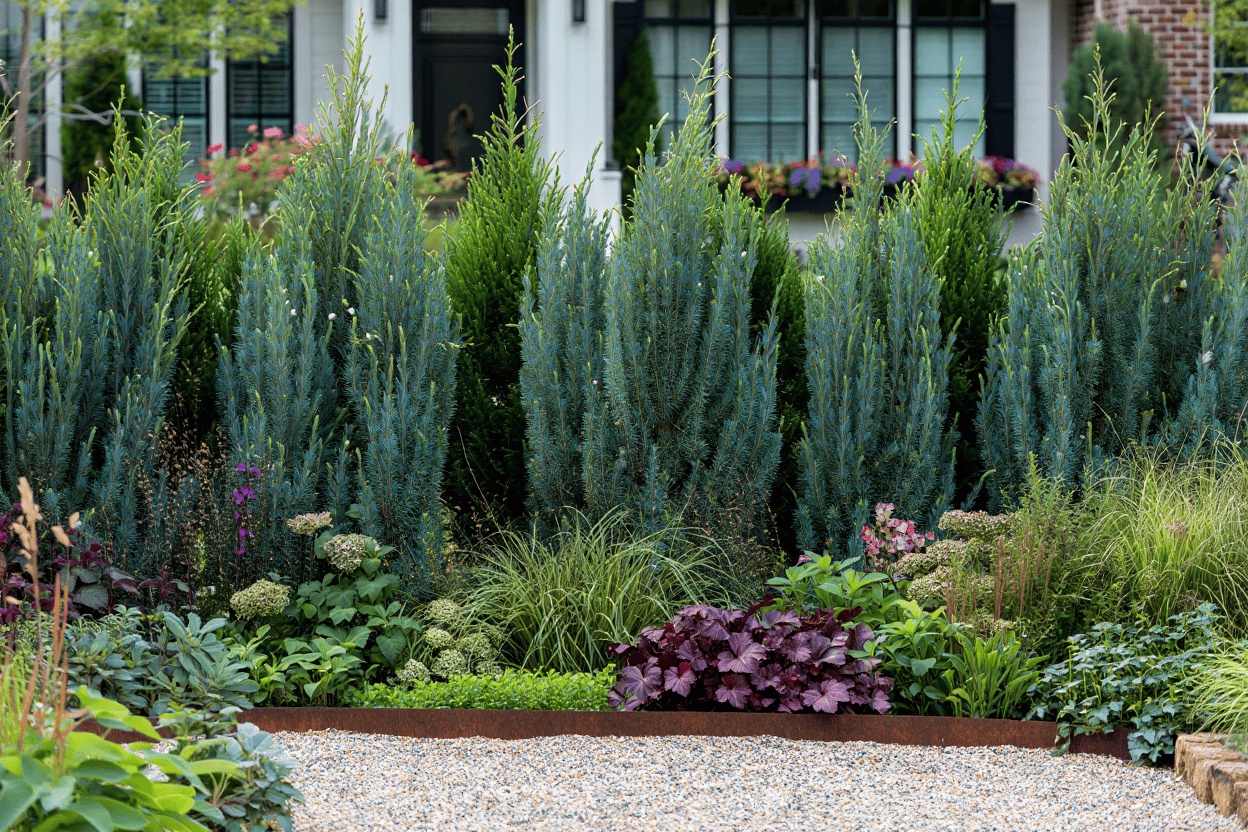
Irish juniper is a fast growing evergreen shrub that’s ideal to block view lines. It has upward pointing branches with prickly and pale green needles.
But it’s the shape that make it perfect. It grows fast into tall columns with super thick branching and foliage.
You can stop the view from window that looks into your private garden with great precision, with this lovely conifer.
And you can do it all year round! This is a strange variety, in the Nineteenth Century it used to have a round habit, but then it just.. changed! It is a receiver of the Award of Garden Merit by the Royal Horticultural Society.
Irish juniper is perfect for formal gardens and terraces; its shape is very sculptural and you can improve it with light pruning.
But even in an informal setting it will loom good if mixed with other plants to make it appear less “geometrical”.
12: Oakleaf Hydrangea (Hydrangea quercifolia)
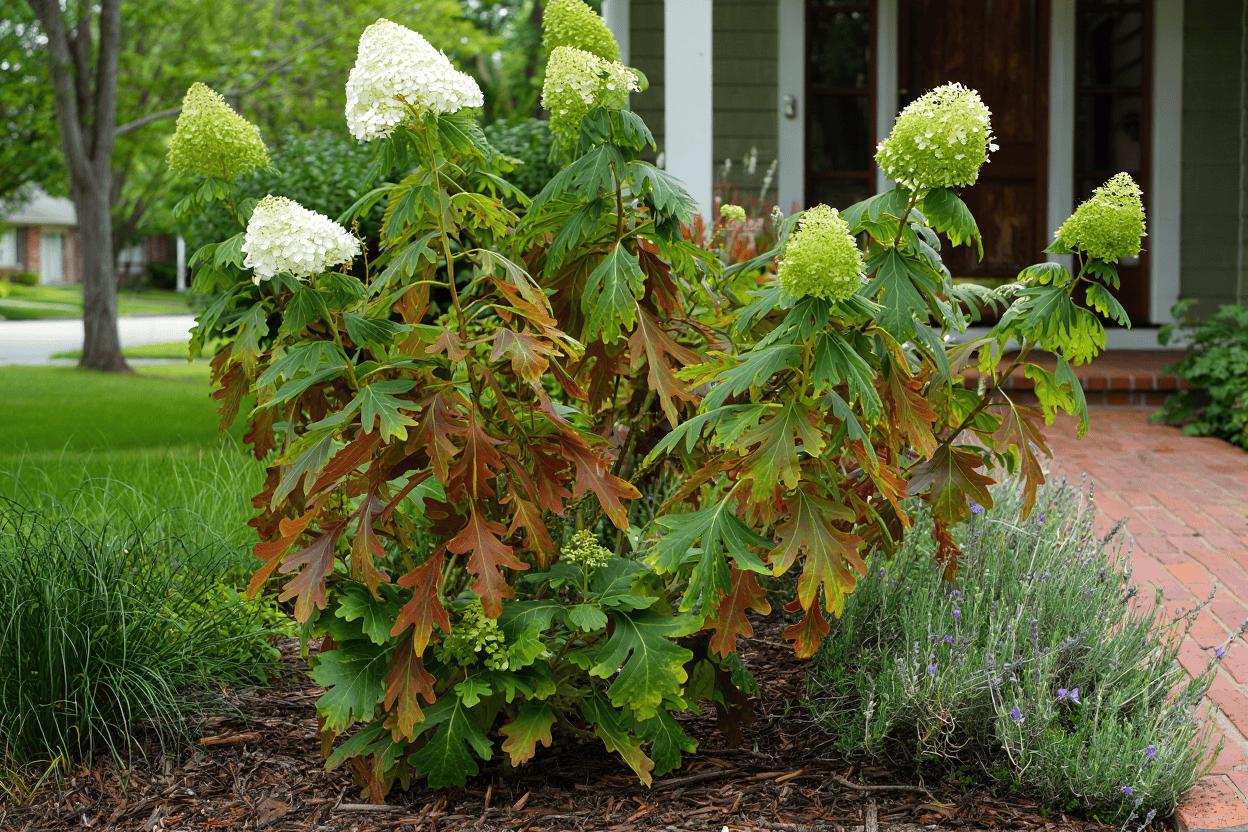
Oakleaf hydrangea grows its big leaves at high speed, and they can be 8 inches across (80 cm); they are deeply lobed, hence the name, and they start off light green in spring, them mud green, and they close the year with copper and red shades.
The conical spikes of start off in late spring, pointing out and up from the foliage. And they will stay with you for months, at first, they are rosy white, but they get darker and darker as days get longer and hotter and by the end of summer, they are brown! Each inflorescence can be 1 foot long (30 cm)!
Oakleaf hydrangea has a lush look and thick foliage, which makes it perfect for tall borders or to block off undesired eyes.
It is best in informal gardens, but its foliage makes it suitable for exotic and tropical themes as well.
13: Purple Chokeberry (Photinia floribunda)
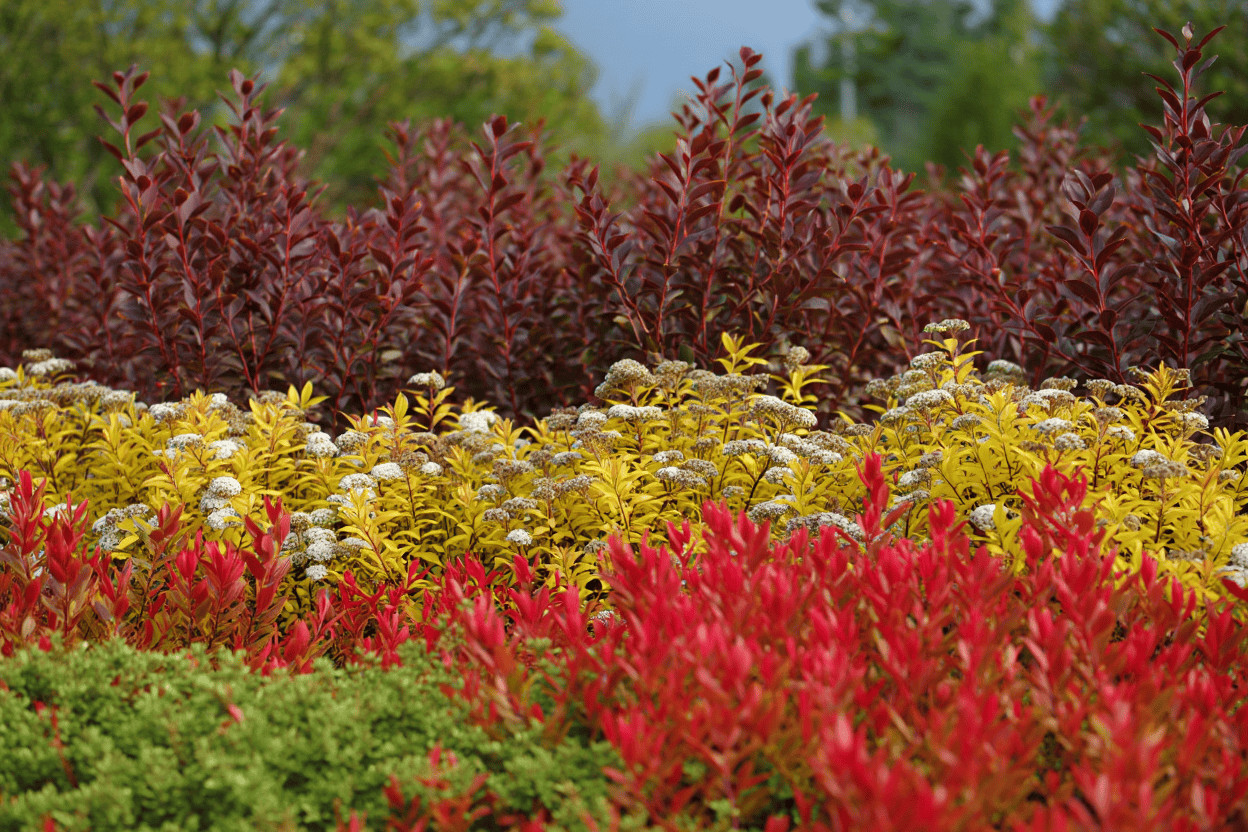
Purple chokeberry is a deciduous flowering shrub that will grow fairly fast into considerable size, blocking off a large part of your garden from view.
It has oval, glossy and mid green leaves, which will intersperse with clusters of delicate looking round clusters white flowers with five petals that look a bit like those of pear trees.
These will attract pollinators, then, the petals fall, it’s the turn of birds. Yes, because black and shiny berries will hang from the dark branches. And these look great in fall, against the yellow, orange and red foliage.
The long leaves of purple chokeberry provide a shield from viewers in good size informal and traditional gardens, especially those with a temperate look, and in fact it is a fairly cold hardy shrub you can grow where winters are severe.
14: Ninebark (Physocarpus opulifolius)
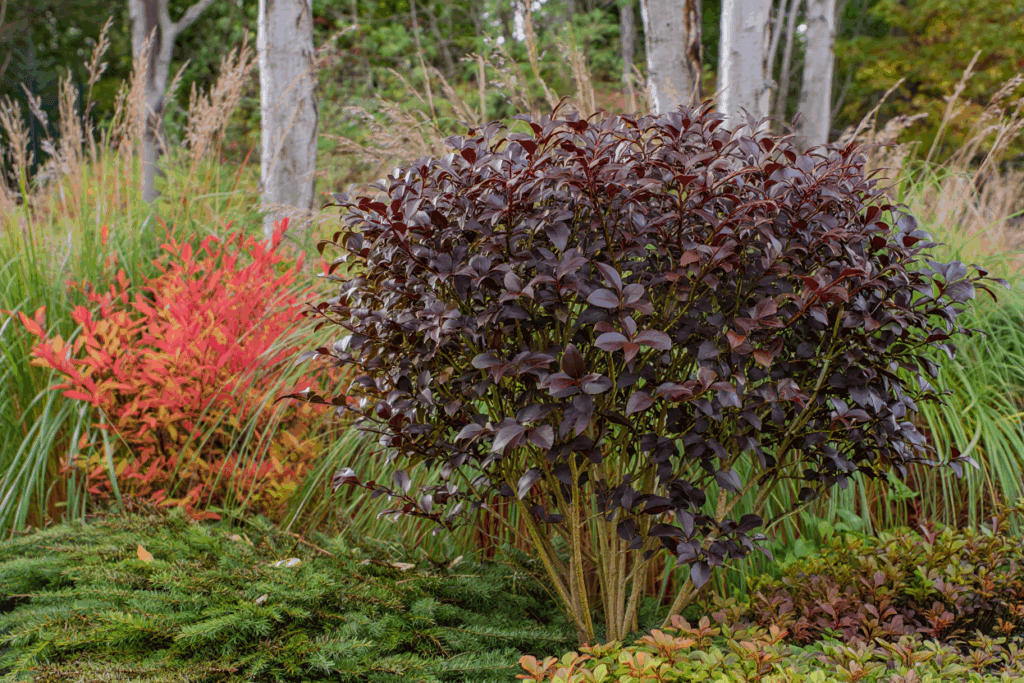
Ninebark is one of those rare fast-growing shrubs that offers both privacy and personality. It fills in quickly—often within a single growing season—forming a thick, arching screen of layered foliage that’s as beautiful as it is functional. The name comes from its peeling, papery bark, which reveals warm copper tones underneath and adds subtle texture even in winter when the leaves are gone.
Through spring and early summer, Ninebark bursts with clusters of soft white or pale pink blooms that attract bees and butterflies. The flowers mature into deep red seed capsules that linger into fall, giving a second season of color. Depending on the cultivar, the leaves may range from bright green (‘Dart’s Gold’) to deep burgundy (‘Diablo’) or even smoky purple (‘Summer Wine’), creating a striking hedge or backdrop that complements nearly any planting style.
Ninebark’s fast growth and easygoing nature make it ideal for privacy planting, but unlike privet or burning bush, it’s entirely non-invasive and native to North America.
Hardiness: USDA zones 3 to 7
Light exposure: Full sun to partial shade
Blooming season: Late spring to early summer
Size: 6–10 ft tall × 6–8 ft wide (1.8–3 m × 2.4 m)
Soil: Average, well-drained loam or clay; tolerates dry or rocky sites
15: Japanese Andromeda (Pieris ‘Brouwer’s Beauty’)
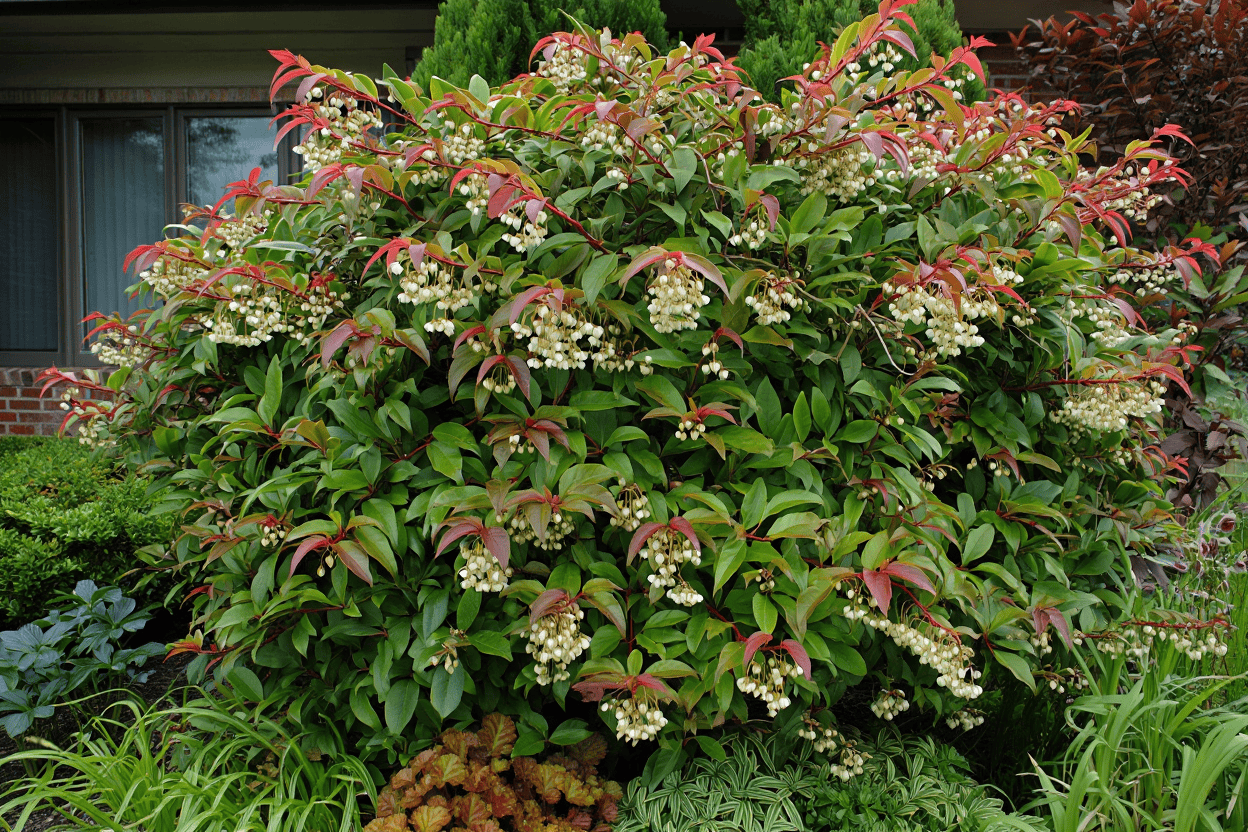
Japanese Andromeda is a fast growing evergreen shrub with beautiful foliage and blooms. Related to the more famous mountain Andromeda, it grows bugger and faster though.
The flossy and long leaves will cover the whole plant all year round, making a perfect screen for you and your family.
But this plant is also famous for its massive spring blooms… Many white urn shaped small flowers will hang from long stems in thick and big clusters, attracting pollinators and butterflies galore.
Onlookers will only wonder what’s happening beyond the thick foliage and white blossoms, while you will enjoy your garden life in peace and with a spot of fresh shade.
Japanese Andromeda is a showy shrub for informal, traditional but also urban and suburban gardens. It is very low maintenance but it gives you so much, including a peaceful life…
Tips for Using Fast-Growing Shrubs as Living Privacy Screens
Let’s be honest — privacy in a garden isn’t just about hiding. It’s about creating comfort. You want that cozy, sheltered feeling without turning your backyard into a fortress of foliage. I’ve seen too many gardens lose their light and balance because the hedge grew faster than the gardener could keep up.
The trick isn’t height — it’s strategy. You don’t need to block everything; you just need to block the right things.
Start With the Spaces That Matter Most
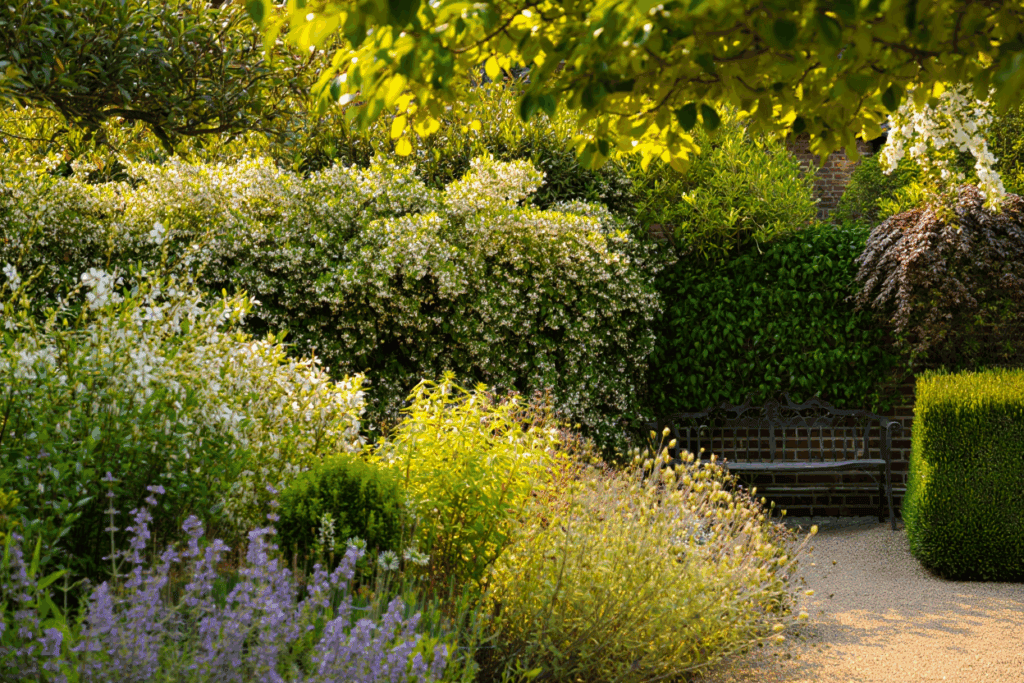
You don’t have to screen the entire yard. Focus on where privacy actually matters — the patio where you sip coffee, the play area for your kids, or the little corner where you like to read. Think of it like interior design for your outdoors: some rooms need curtains, others just need a view.
If you sketch or visualize your garden, mark the areas that feel “too open.” Those are your starting points.
Find the Real “View Lines”
Now go outside and look around. Stand in your favorite sitting spot and find the angles where you feel exposed — the neighbor’s kitchen window, the street corner, the second-story deck next door. Those sightlines are what you’re really screening.
You’re not planting a wall; you’re planting precision. Block only what needs blocking, and you’ll keep your garden open, bright, and balanced.
Balance Privacy With Light
The fewer view lines you block, the more sunlight you’ll keep. If one window gives you trouble, plant a dense shrub right in its path. But if most of your exposure comes from passing traffic or pedestrians, you can go lighter — choose shrubs with airy foliage that suggest privacy without shutting out the light.
That’s the difference between a garden that feels private and one that feels claustrophobic.
Think in Layers, Not Walls
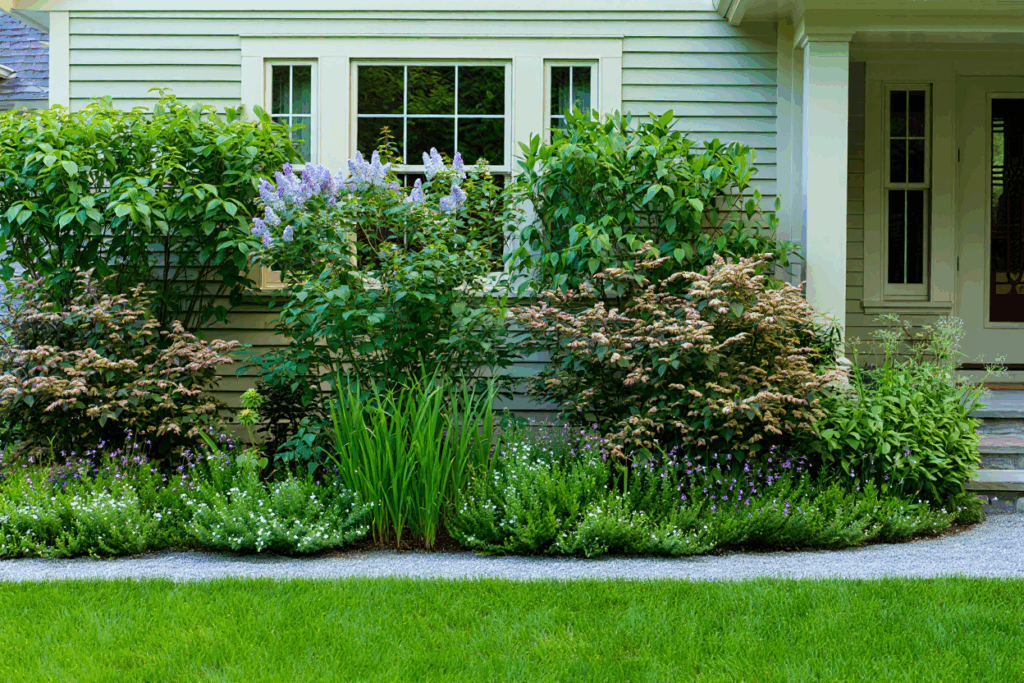
Professional landscapers rarely rely on a single hedge line. They mix shrubs of different heights and densities — maybe a tall evergreen in the back, medium flowering shrubs in front, and a few ornamental grasses or perennials to soften the edges.
This layered approach adds depth, beauty, and year-round interest while breaking up harsh lines. It also helps air and light move through naturally.
Use Height Wisely
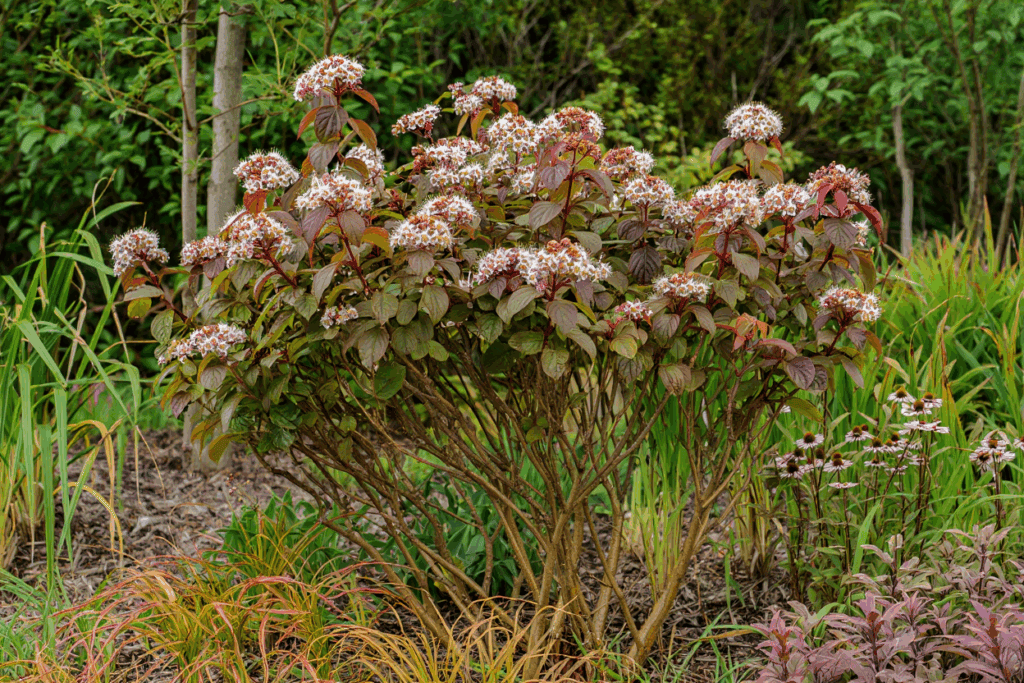
If you’re screening a sitting area, you don’t need a ten-foot hedge. A five-foot shrub will do the job — and you’ll keep your sunshine. For upstairs windows peering down, move the planting line closer to where you sit. The closer the hedge is to you, the shorter it needs to be to block the view.
It’s a simple geometric trick, but it saves years of unnecessary pruning.
Make Shrubs Work Harder for You
Short on height? Give your shrubs a boost. Growing them in large decorative containers instantly adds a foot or two and lets you reposition them if you misjudge a sightline. I’ve used this trick for clients who wanted flexibility — and it works beautifully.
Focus on Where You Pause, Not Where You Pass
Don’t worry about screening paths or walkways. Instead, protect the places where you actually linger — the table where you eat dinner, the chair that catches the morning sun. Privacy is most valuable where you stop to enjoy it.
Mix Green With Structure
A hedge doesn’t have to do all the work. Combine fast-growing shrubs with trellises, fences, or even garden art to create privacy in layers. It’s visually softer and often takes up less space.
Plan for the Seasons
Finally, think year-round. Evergreens give constant coverage, but deciduous shrubs offer flowers, fall color, and more seasonal change. If you’re not outside much in winter, deciduous options may be perfect — they let in sunlight when you need it most.

Written By
Adriano Bulla
A qualified organic gardener and permaculturist with many years experience “getting his hands dirty”, Adriano Bulla has been writing books and articles on horticulture, garden design and innovatve growing methods.
